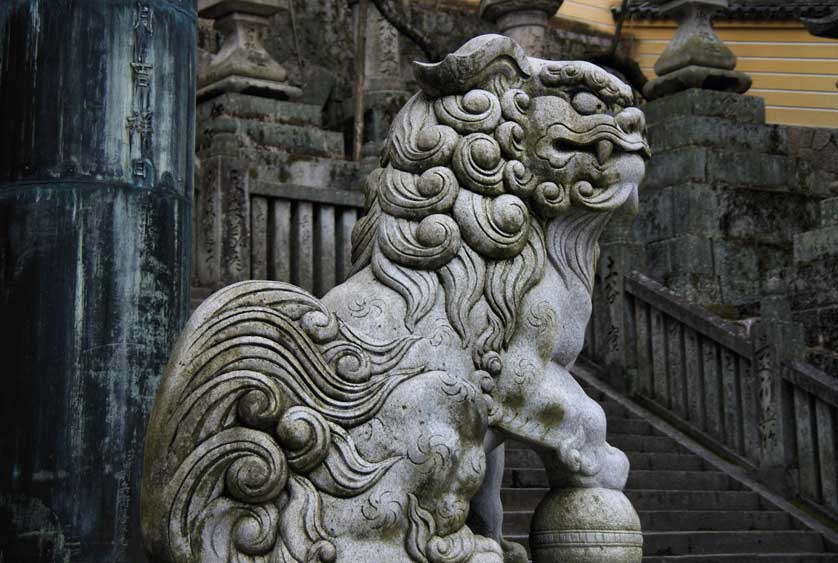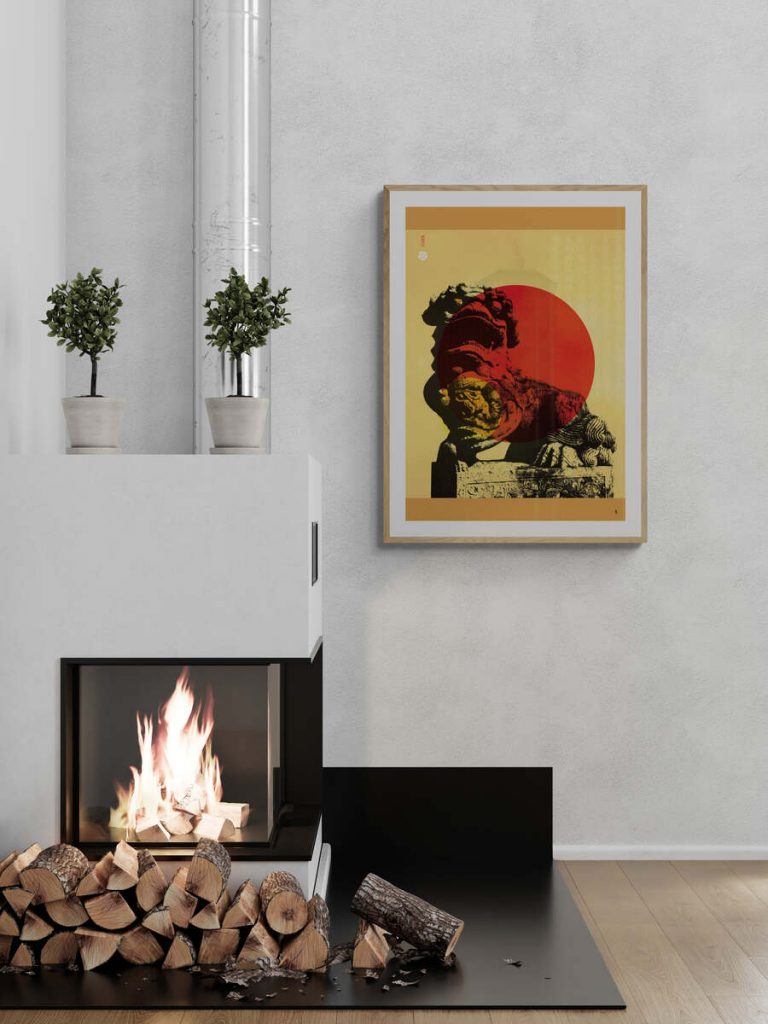Introduction
Foo Dogs, also known as “Komainu” or “Lion Dogs,” hold significant importance in Japanese culture and art. These guardian lion-like statues, often found in pairs, have a rich history and symbolic meaning that extends beyond their aesthetic appeal. Here’s an exploration of their significance:
1. Protective Symbols
Foo Dogs are primarily known as guardians and protectors. Placed at the entrances of shrines, temples, and important buildings, they are believed to ward off evil spirits and protect against negative energy. The positioning of a pair of Foo Dogs is typically asymmetrical, with one having an open mouth (“a” sound) to pronounce the beginning of the Buddhist mantra “a-un,” while the other has a closed mouth (“un” sound) to pronounce the mantra’s end. This represents the harmonious balance of opposites.

2. Symbolism and Origins
Foo Dogs are not native to Japan but were originally introduced from China. They are based on Chinese guardian lion statues known as “Shishi.” In Japan, these statues underwent a cultural transformation and took on their distinctive form. While Shishi are typically portrayed as fierce and protective, Japanese Komainu often have a more serene and approachable appearance.
3. Male and Female Pairing
A common feature of Foo Dog pairs is the depiction of a male and female. The male Foo Dog typically has a paw on a ball or sphere, symbolizing strength and protection of the world, while the female often has a paw on a cub, signifying nurture and protection of offspring.

4. Artistic Expression
Foo Dogs are not limited to sculptures but also appear in various forms of Japanese art, including woodblock prints, ceramics, and textiles. They are often portrayed with intricate details and artistic variations, showcasing the creativity of Japanese artisans.
Foo Dogs in Ukiyo-e Art
Ukiyo-e prints (also known as Japanese Woodblock art) featuring Komainu, or guardian lion dogs (Foo Dogs), are relatively rare compared to other common subjects like landscapes, kabuki actors, or beautiful women. However, a few notable ukiyo-e artists have depicted Komainu in their works. Here are a couple of examples.
Utagawa Kuniyoshi’s “Komainu”
Utagawa Kuniyoshi, a renowned ukiyo-e artist known for his imaginative and dynamic compositions, created a print titled “Komainu.” In this print, Komainu are portrayed with vibrant colors and intricate detailing. They appear in a playful and almost whimsical manner, showcasing Kuniyoshi’s unique style. This print is a fine example of how traditional Japanese themes could be reinterpreted by ukiyo-e artists.

Utagawa Hiroshige “Lion and Cub”
This ukiyo-e artwork by the great master Hiroshige depicts a Shishi and cub.

While these examples showcase Komainu in ukiyo-e, it’s important to note that they are not as common a subject as other themes in ukiyo-e art. The presence of Komainu in ukiyo-e demonstrates the adaptability of this art form to various aspects of Japanese culture and symbolism, including the representation of guardian figures like Komainu.
5. Cultural Significance
Beyond their protective role, Foo Dogs are deeply ingrained in Japanese culture and are associated with various rituals and customs. They are commonly seen during traditional events, such as New Year’s celebrations and shrine festivals.
6. Architectural Elements
In architectural design, Foo Dogs are incorporated into the construction of buildings and gates. Their presence serves as a visual and symbolic boundary, distinguishing sacred spaces from the secular world.
7. Influence on Modern Art and Design
The symbolism and aesthetic appeal of Foo Dogs continue to inspire contemporary Japanese art and design. They are often incorporated into modern interiors, textiles, and fashion as a nod to tradition and protection.
Conclusion
In summary, Foo Dogs are not mere decorative elements in Japanese culture and art; they embody the deep-rooted belief in protection, balance, and the harmony of opposites. Their enduring presence in various aspects of Japanese life reflects their timeless significance and enduring cultural relevance.
Read more:
- Where Can I Buy Ukiyo-e Art? Here’s where to find those rare prints
- Zen-Inspired Minimalism: Finding Harmony in Simplicity
- 10 Amazing Facts About Mount Fuji
- From Sacred Entrances to Artistic Marvels: The Enchanting World of Torii Gates in Japan

At the Art of Zen we have a wide selection of original Japanese art prints in the ukiyo-e and Japandi style. Some of our best selling work is Mount Fuji wall art and Japandi wall art.
Add some zen to your space with some art from the Art of Zen shop.
Featured image at top by Chris Feser of a Chinese guardian lion at Mount Emei in China.




0 Comments